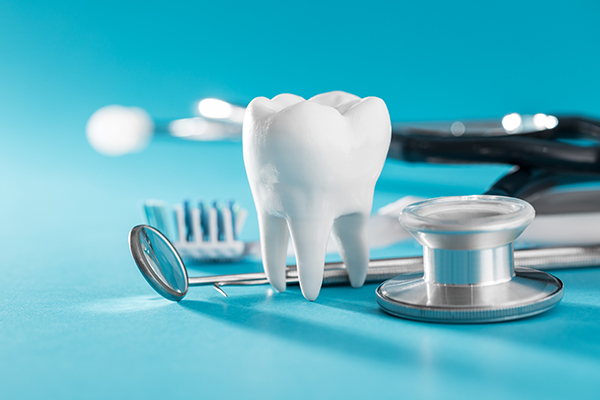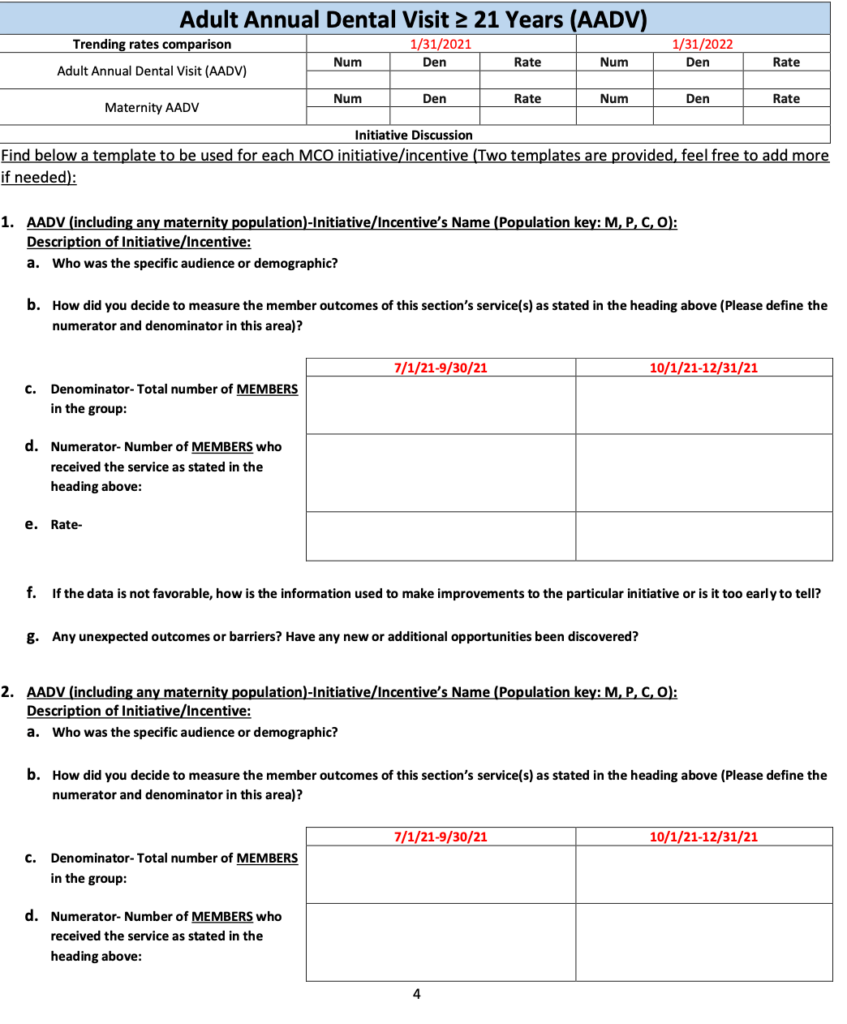Oral health is central to overall health, yet 34 percent of Americans lack access to affordable dental care, a challenge exacerbated by the COVID-19 pandemic. The pandemic disrupted oral health care in several ways. Early on, dental providers faced office closures and lacked personal protective equipment (PPE). Similarly, school-based dental sealant programs were inaccessible with school closures, limiting preventive care for school-age children from low-income families. These barriers led to an overall decrease in preventative and routine dental procedures. Dental care remains childrens greatest unmet health need during the pandemic, disproportionately affecting households with pandemic-related income and job loss. As a result of COVID-19, a shortage of dental assistants, hygienists and other team members is hindering the dental sector’s ability to recover and resume care.
In June 2021, the National Academy for State Health Policy (NASHP) convened a group of Medicaid and public health state leaders to discuss strategies and considerations for increasing access to oral health services amidst recovery from the COVID-19 pandemic. Participants identified teledentistry, school-linked programs and new federal funding available under the American Rescue Plan Act as key opportunities to increase access to oral health care.
Learn more about NASHP’s work with state officials on oral health
State Levers to Support Dental Care in COVID-19’s Public Health and Economic Emergency
Teledentistry
Participating state officials expressed their interest in increasing access to oral health care by sustaining or building on new teledentistry flexibilities introduced during the pandemic. According to the ADA, teledentistry, like other telehealth services, involves “the use of telehealth systems and methodologies” in dentistry, such as live video interaction, asynchronous or “store and forward” communication, and remote patient monitoring. Adoption of these methods and reimbursement for teledentistry approaches varies by state. Teledentistry can greatly increase access to oral health care, particularly for underserved populations such as communities of color and those living in rural areas.
During the pandemic, 17 states updated their Medicaid teledentistry guidance to allow new provider types to deliver virtual services, expand the scope of services that can be reimbursed through Medicaid, and ease consent restrictions that limited access to teledentistry, among other policy modifications. Considering telehealth policy revisions made during the COVID-19 pandemic, twenty-three states currently have policies in place to allow for delivery and reimbursement of teledentistry, however, challenges remain. For example, state leaders shared concerns about reimbursement for teledental services and limited guidance for providers about scheduling teledentistry visits in tandem with in-person visits. Some states, such as Pennsylvania and Rhode Island, seek to maintain or enhance teledentristry policies enacted during the pandemic to increase access to care for low-income children and adults.
In March 2020, Pennsylvania established guidance defining teledentistry as “two-way, real-time interactive communication” between a patient and dental provider. Accordingly, the Pennsylvania Medicaid program dental fee schedule was updated with billing codes D9995 (“teledentistry – synchronous”) and D0140 (“limited oral evaluation – problem focused”). (The D9995 code is not reimbursable, rather it is used to document teledental visits and must be used in conjunction with D0140 to provide services to patients experiencing dental emergencies). This policy lasted for the duration of the state of emergency in Pennsylvania, ending June 10, 2021. Now, officials seek to make permanent these Medicaid policies for preventive teledentistry through developing guidance on:
- virtual supervision of fluoride varnish application,
- tobacco cessation counseling,
- oral hygiene instructions and nutritional counseling,
- limited problem-focused evaluations,
- integration of different settings of care delivery, and
- care coordination for follow up to in-person visits as needed.
Rhode Island is in the process of establishing Medicaid guidance for teledentistry to expand dental services, particularly for children. At the beginning of the COVID-19 pandemic, the Rhode Island Department of Health released guidance allowing providers to bill telehealth services to Medicaid. This allowed dental providers to bill for a care coordination phone call (D9992) and schedule emergency video consultations with patients (D9310). This guidance expired on July 6, 2021, but the Rhode Island legislature recently passed an update to the Telemedicine Coverage Act, which expands telemedicine coverage requirements for Medicaid and private insurers, requires reimbursement rates for telemedicine services to match in-person rates, and ensures that dentists providing teledentistry services be held to the same standards of care that would apply in an in-person setting. Work to communicate reimbursable services to dental providers is in progress.
As states identify approaches to expand the use of teledentistry, many are creating pathways for patients and their caregivers to administer certain preventive procedures under virtual supervision from dental practitioners. As part of a pilot project, Nevada allows parents to apply fluoride varnish for their children under virtual supervision from a licensed dental provider. The Nevada Board of Dental Examiners approved virtual provision of fluoride varnish for individuals under the age of 21 in October 2020. A forthcoming fact sheet will provide more information on Nevadas fluoride varnish program.
School-linked and School-based Programs
States also are considering how to leverage schools to fill dental care gaps among children. School-based dental sealant programs (SBSPs) provide critical primary and preventive dental care and disproportionately serve low-income students and those living in rural areas. However, according to a 2015 survey, 39 states and the District of Columbia do not have sealant programs in most of their high need schools, and only 5 states have sealant programs in at least 75 percent of high need schools. The Centers for Disease Control and Prevention (CDC) published considerations for SBSPs during the COVID-19 pandemic that includes information on restarting SBSPs. Still, state leaders cited concerns that reestablishing school-based programs will be challenging due to safety concerns, changing guidance, and workforce shortages, and they are searching for other strategies to increase access to dental care for students from low-income households.
To encourage children to visit dental providers in advance of the 2021-2022 school year, Smile, California, the California Medi-Cal Dental Program‘s campaign, is partnering with the Office of Oral Health and Local Oral Health Programs to carry out a Back Tooth School Activation. Campaign partners can access Back Tooth School resources on the Oral Health and School Readiness website. Additionally, although the pandemic has limited students’ ability to receive oral care at school, California is pursuing strategies to screen children at school and refer them to dental providers using an electronic referral system. California’s Dental Transformation Initiative created a pilot program to improve dental health for Medicaid-eligible children. More LA Smiles, run through UCLA, is the largest of these pilot projects and created the LA Dental Registry and Referral System (LADRRS) to connect medical providers in clinical settings with dental providers. To implement a school-linked program, a platform like LADRRS can be modified to include referrals from schools. This system will enable state leaders to target low-income schools and gather data on students’ health.
During the roundtable, state leaders shared concerns about the increased challenges school nurses face as a result of the COVID-19 pandemic. The Colorado Department of Public Health and Environment (CDPHE) collaborated with its Department of Education to train over two-thirds of the state’s school nurses to distribute and respond to home screening tools to identify students with urgent oral health needs. Schools give parents or caregivers the option to fill out an oral health screening form, translated into several languages so that school nurses can address care needs or refer students to dental providers.
Colorado’s Approach to COVID-19 Recovery:
In response to challenges created by the COVID-19 pandemic, Colorado compiled essential resources and practices enabling continued access to oral health care for priority populations in their Dental Safety-Net Promising Practices Report. This document is targeted towards dental clinics and safety net organizations and is updated regularly as clinics encounter issues retaining staff and responding to community needs.
Federal Funding Opportunities
States can leverage new and existing federal funding opportunities in the wake of COVID-19 to improve oral health access. The American Rescue Plan Act (ARPA) provides significant funding to states and localities to assist in COVID-19 recovery. The Act includes $8.5 billion for a provider relief fund targeted for rural Medicare and Medicaid providers. There are also $500 million in emergency grants for rural health to cover costs associated with increased telehealth capabilities and lost revenue from COVID-19.
ARPA also includes funding for health centers through the Health Resources and Services Administration Health Center Program that serve an important role in the dental safety net. The law allocates $7.6 billion to the Department of Health and Human Services for health centers and includes allowable funding uses with implications for oral health.
For example, four health centers in Rhode Island will use a portion of these funds to pay for community health workers’ engagement in oral health and case management.
Conclusion
Moving forward, states can involve oral health policymakers in planning discussions for allocating newly available federal dollars. As states engage in health transformation efforts, oral health stakeholders can assist states in considering how to integrate dental and medical care to address overall health by leveraging technology, schools and federal resources.
Allowable uses of ARPA funding for community health centers with implications for oral health:
Recovery and Stabilization
Pent Up Demand: Bring sites, services, and staff to an operational capacity sufficient to meet pent up demand for services, including addressing the needs of patients and other vulnerable populations who have been without care and whose conditions and needs may have been exacerbated by the social and financial impacts of COVID-19.
Facilitating Access: Expand or enhance enabling or other services to address the unique and evolving access barriers experienced by underserved and vulnerable populations who have been without care and whose conditions and needs may have been exacerbated by the social and financial impacts of COVID-19.
Access for Families: Enhance capacity to engage families that have fallen out of care during the COVID-19 public health emergency to ensure that they receive the recommended comprehensive care and resources that align with the childs age, development, and social risk factors, including hiring and training new personnel (e.g., outreach workers, case managers, community health workers, other enabling personnel) to support services such as vaccinations and health education and counseling.
Infrastructure
Team-based Care: Renovate space to support team-based and inter-professional service delivery models needed to provide continuity of care in public health emergencies, including new or further integration of behavioral health, oral health, vision, and/or pharmacy services.
Acknowledgement: The authors thank state officials from California, Rhode Island, Colorado, Pennsylvania, Minnesota, and North Carolina who reviewed a draft of this publication. Additionally, we thank the Health Resources and Services Administration (HRSA) officials who provided thoughtful input. This project is supported by the Health Resources and Services Administration (HRSA) of the US Department of Health and Human Services under grant number U2MOA394670100, National Organizations of State and Local Officials. This information, content, or conclusions are those of the authors and should not be construed as the official position or policy of, nor should any endorsements be inferred by HRSA, HHS or the US government.




